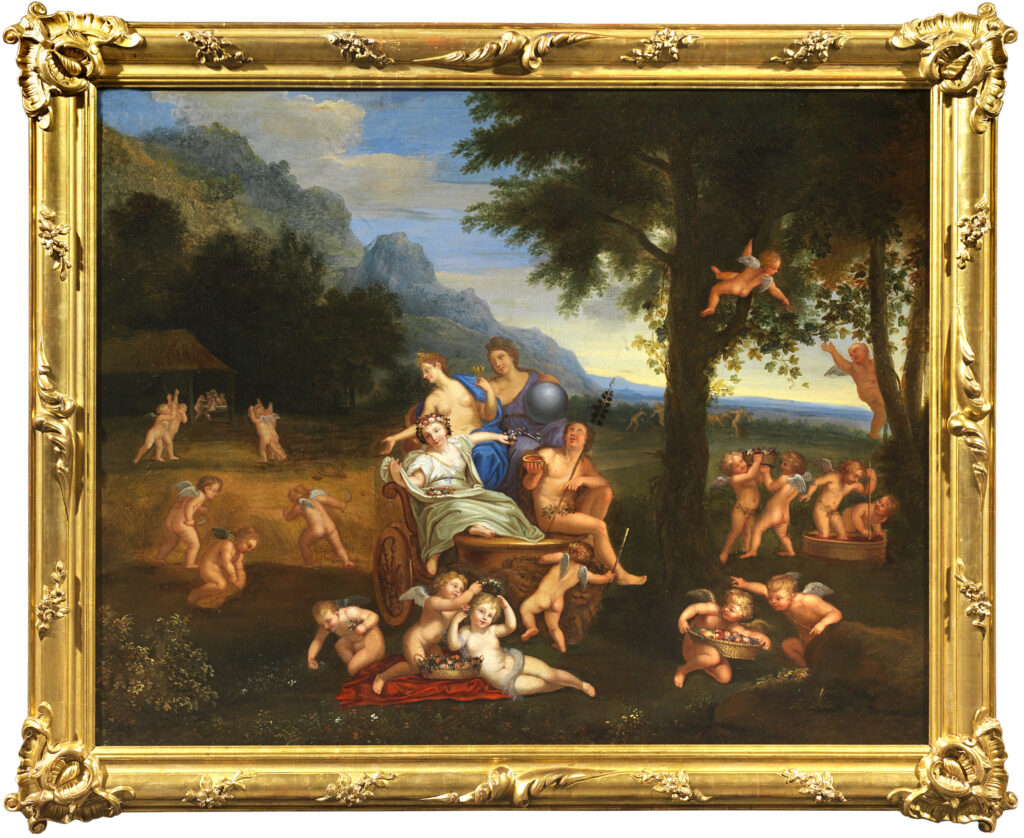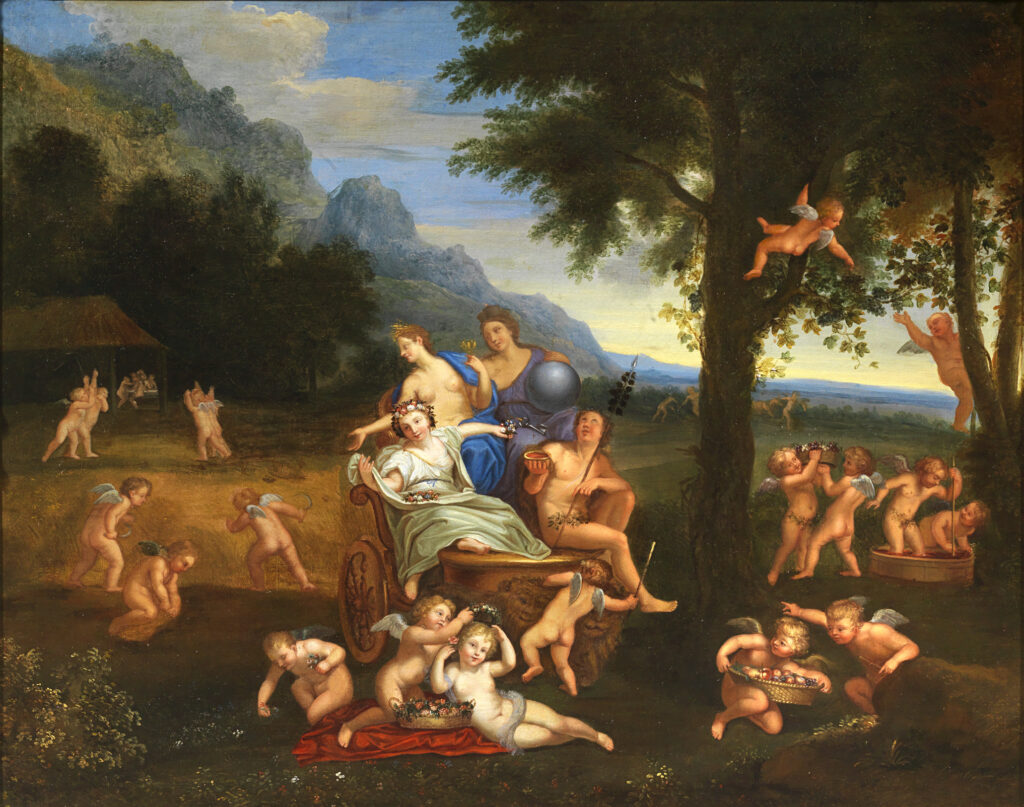FRANCESCO ALBANI, WORKSHOP OF
Bologna, 1578 – 1660
Allegory of Earth
oil on canvas, cm 79×98
Our two canvases are inspired by the allegories of the Four Elements painted by Francesco Albani and now in the Galleria Sabauda in Turin. The Bolognese painter produced the series between 1625 and 1628 for Cardinal Maurizio di Savoia who, during his stay in Rome, was fascinated by the tondi with the stories of Venus and Diana.
A refined patron of both art and science, Cardinal Savoia was certainly no stranger to the cycle’s iconographic programme, along with Albani himself and other Bolognese humanists. Our paintings, attributable to a master adhering to Albani’s style, represent the allegories of Earth and Water.
The protagonist of the first canvas is the element Earth, represented by Cybele, the Great Mother, a deity symbolising the creative and destructive force of Nature, recognisable by the chariot drawn by two lions, the turreted crown on her head, the globe and the key linked to life. On the chariot, together with the goddess, we see other deities connected to the cult of the earth: Ceres, goddess of the harvest, recognisable by the ears of wheat on her head and in her hands; Flora, connected to the spring blossoming of nature, adorned with flowers; and Bacchus, god of wine, holding a cup and thyrsus, his characteristic attributes. The main characters are surrounded by cupids, further illustrating the central theme of the canvas. Thus, we see the little putti reaping wheat and dividing it into sheaves under the gaze of Ceres, others picking flowers and fruit, and still others attending to the various stages of the grape harvest.
In the second canvas, the scene unfolds in a predominantly marine setting in which Galatea is the protagonist. The nereid is carried in triumph on a shell-chariot drawn by a dolphin ridden by a putto. Around this central event, a series of characters, linked to water and its virtues, animate the rest of the scene: putti and sea nymphs sort pearls and corals, a group of cupids drag nets ashore, a triton, seen from behind, plays the horn-shell that has the power to stir or calm the waters, and a sea centaur flirts with a nereid. On the right of the canvas, in the background, a number of spring and river gods lie placidly, certainly related to the theme of water but more directly to the myth of Galatea as narrated by Ovid (Metamorphoses, Book XIII, vv. 738–897).


